In this article, we delve into the tactical prowess of Lionel Scaloni, the mastermind behind Argentina’s recent successes. As head coach, Scaloni has transformed the Argentine national team, blending traditional strengths with modern strategies. We will explore his preferred formations, key player roles, and the tactical adjustments that have made Argentina a formidable force on the international stage. Join us as we uncover the strategic elements that define Scaloni’s approach and how they have propelled Argentina to new heights.
Build-up
Low Build-up
In the low build-up, Scaloni sets his team up in a 1-4-3-3 formation, with a back four, one number-six, two number-eights, and three up front.
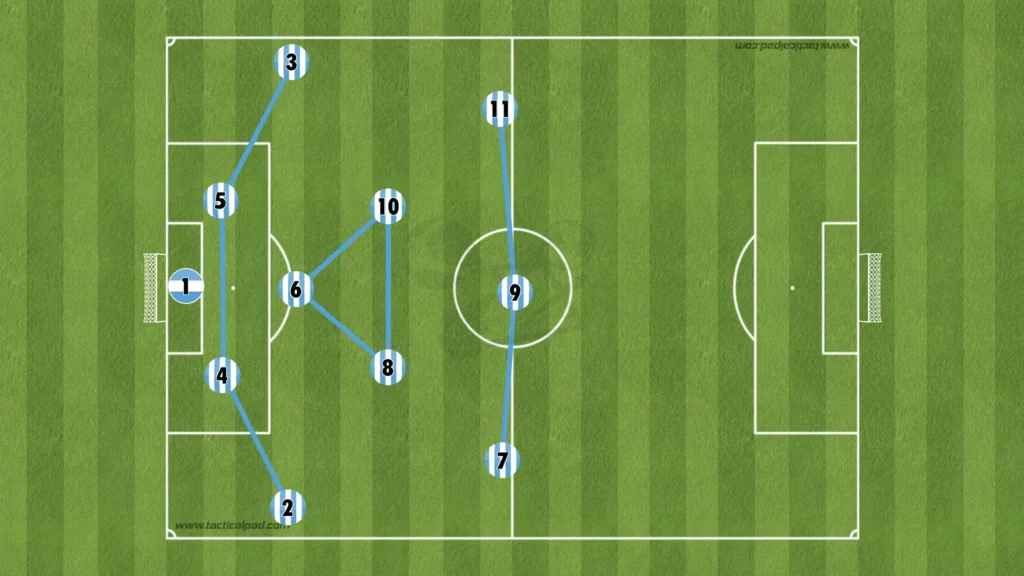
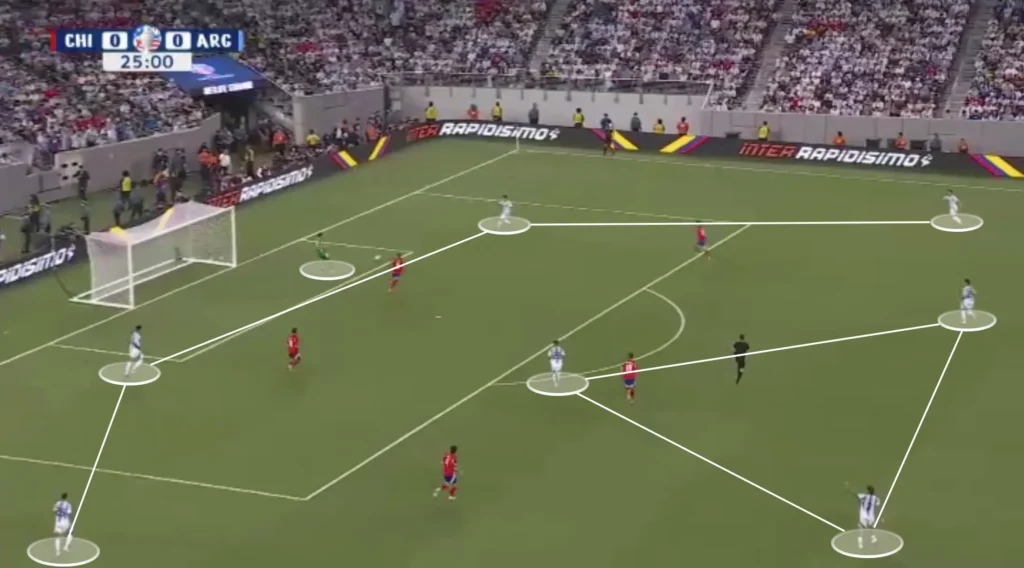
The number-eights often drop in the low build-up, trying to create numerical advantages, allowing Argentina to play through the press.
High Build-up
In the high build-up, Scaloni changes the formation to a 1-3-2-5 formation, with a back three, two holding midfielders, two attacking midfielders, and three up front.
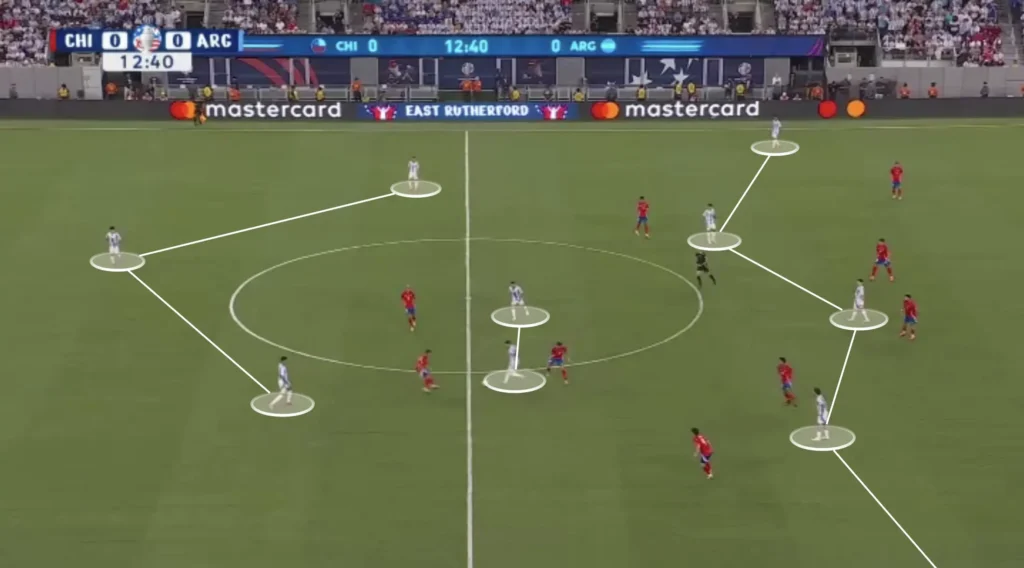
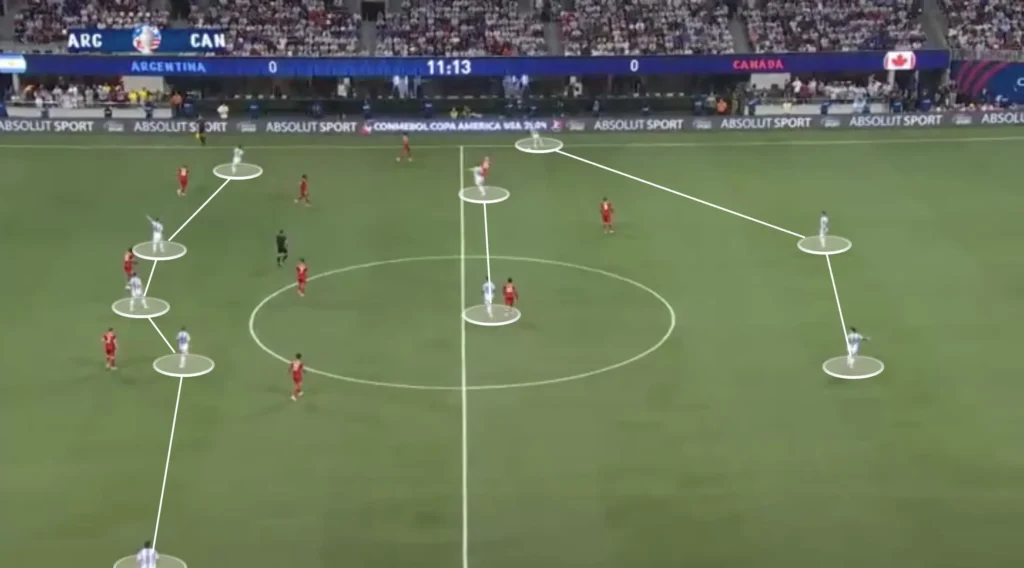
Having four central midfielders(two holding and two attacking) creates more options in the center and less space between the players. Scaloni likes this because he prioritizes playing through the middle. He needs one player high and wide to pull apart the backline while the rest create numerical advantages in the midfield areas. This builds good conditions in defensive transitions, allowing more players to press when they lose the ball. Another purpose for keeping many players in the middle is to shorten the distance between them. This shortens the length of the passes, which naturally shortens the time between passes. This means the opposition players will have less time to push up and press, giving the Argentina players more time and control.
They get into this formation by pushing one of the fullbacks up as a winger, creating a double pivot with two of the midfielders, and having the other midfielder and an inverted winger as the two attacking midfielders. The fullback who does not push up as a winger will primarily act as a center-back, however, he will be in a half-center-back role where he has the freedom to push up into the midfield.
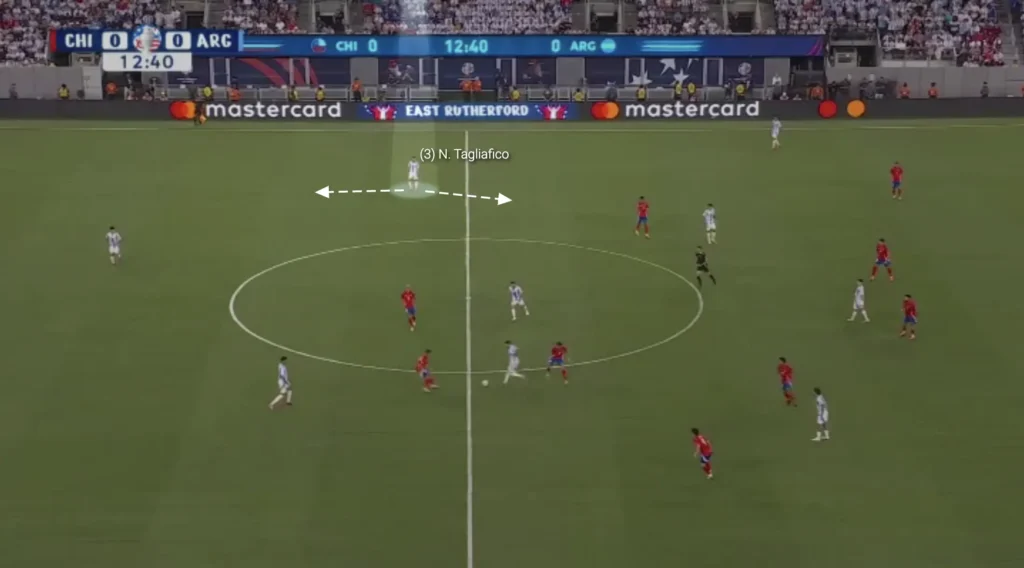
When he pushes up into the midfield, a 1-2-3-5 formation will be created, which allows Argentina to commit more players to the attacks and be even more attacking.
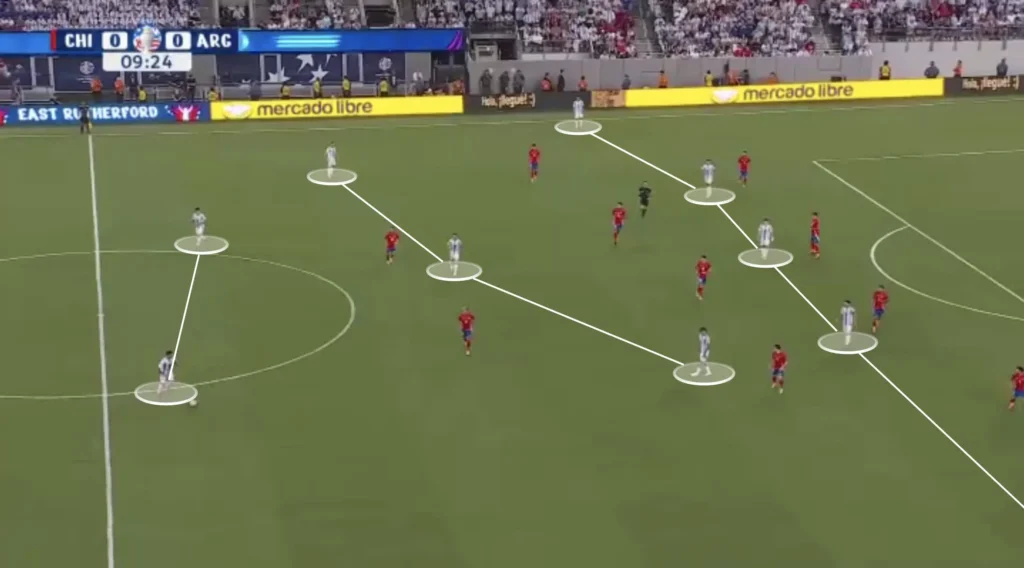
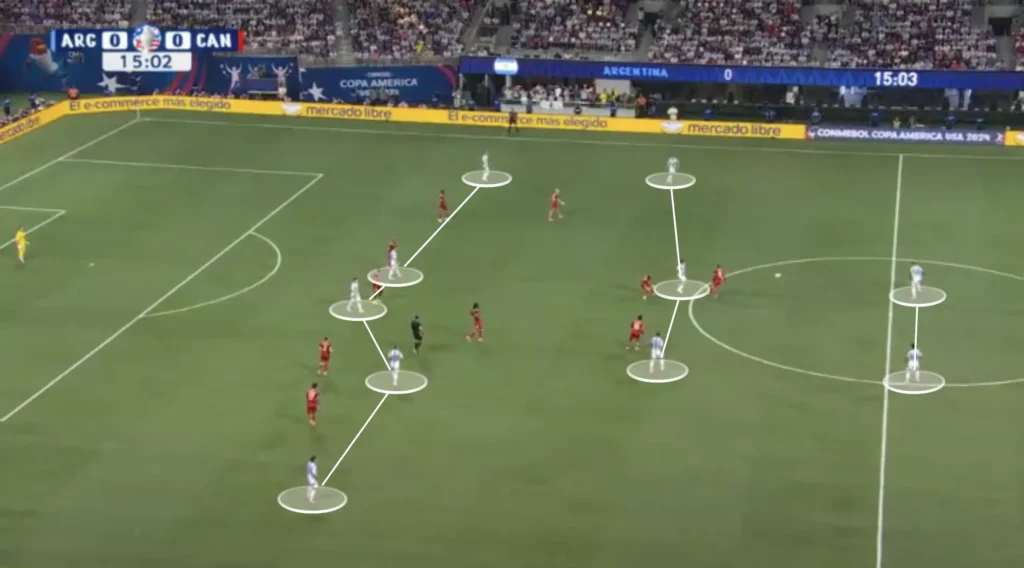
Finding the Pockets
Scaloni’s players always try to find the attacking midfielders in the pockets. They will be positioned behind the opposition’s midfield and the midfield numerical superiority usually means that at least one will be open. The striker and wingers will be pinning the opposition backline, not allowing them to push up on the attacking midfielders when they receive the ball. Argentina will mainly look for straight passes from the backline or holding midfielders, breaking lines and finding these dangerous players who will turn and drive at the defense.
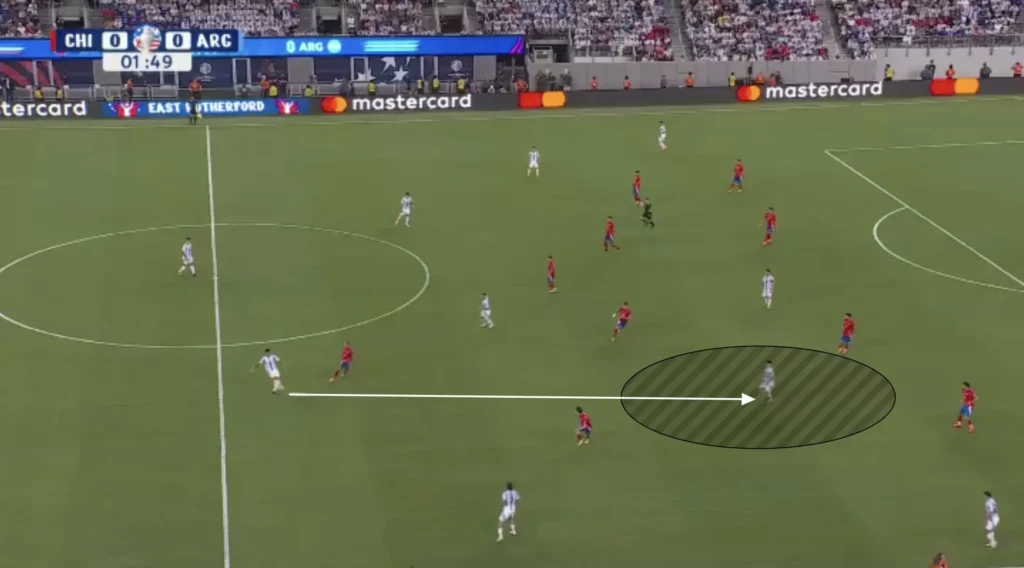
Third-man
Lionel Scaloni wants his team to play through the opposition when possible. One vital tool that they often use is the third-man principle. The third-man principle is a tactical concept used to create and exploit space by involving a third player in a passing sequence. It typically works by having Player A pass the ball to Player B, who then quickly relays it to the free Player C. An opponent will block the pass from Player A to Player C, but the pass from Player B to Player C will be open, which is why he is needed in this passing combination.
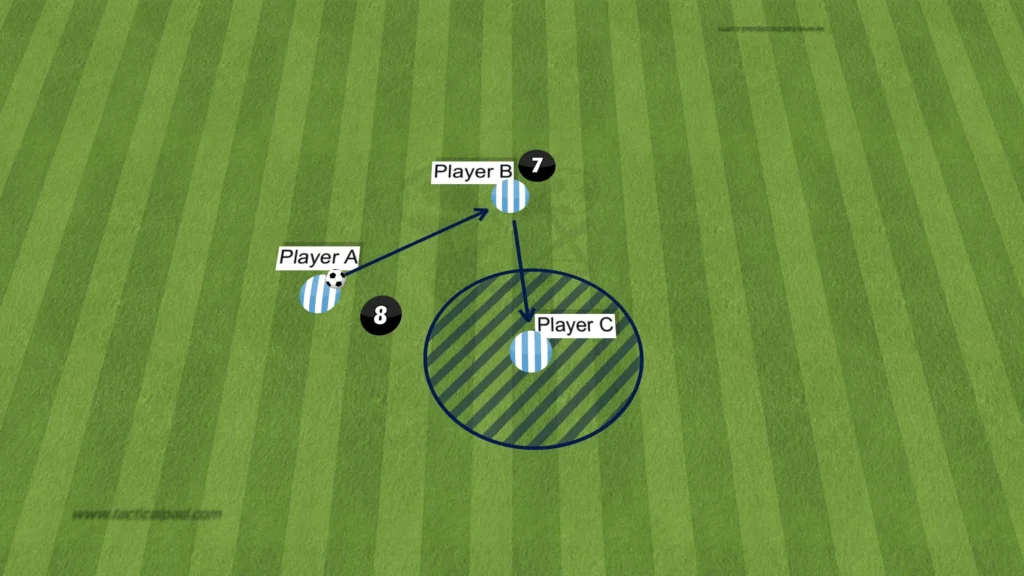
This movement often bypasses an opponent’s pressing line and opens up space, allowing the team to advance the ball more effectively. The key to the third-man principle is timing and positioning, as the third player must anticipate the play, position themselves advantageously, and receive the ball in a manner that breaks the opposition’s defensive structure. This principle is integral to many modern football strategies, promoting fluidity, quick decision-making, and dynamic attacking play.
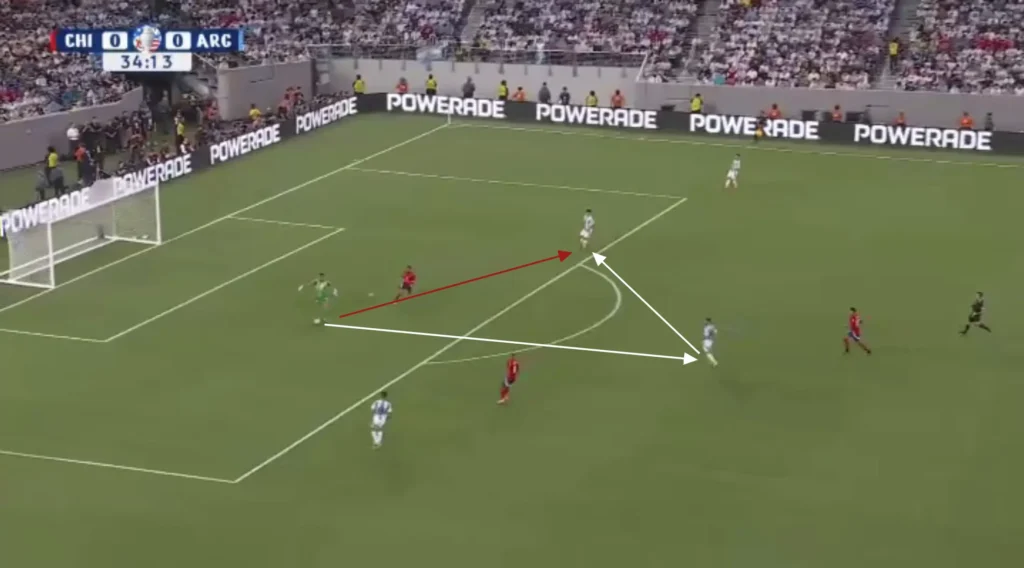
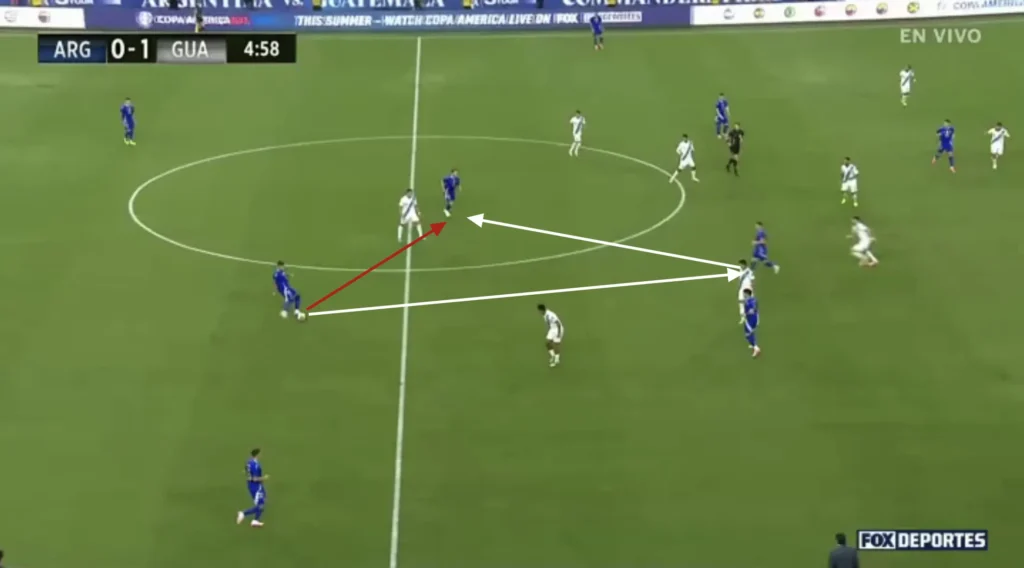
Counter-Movements
Argentina frequently use counter-movements to create space in the build-up. The striker will, for example, often make a run toward the ball when it is with a holding midfielder or defender. An opposition center-back usually follows the dropping striker, opening the space in behind. This allows the Argentine attacking midfielder to run into the open space, receive a through-ball, and take it past the opposition backline, looking to create a goalscoring opportunity.
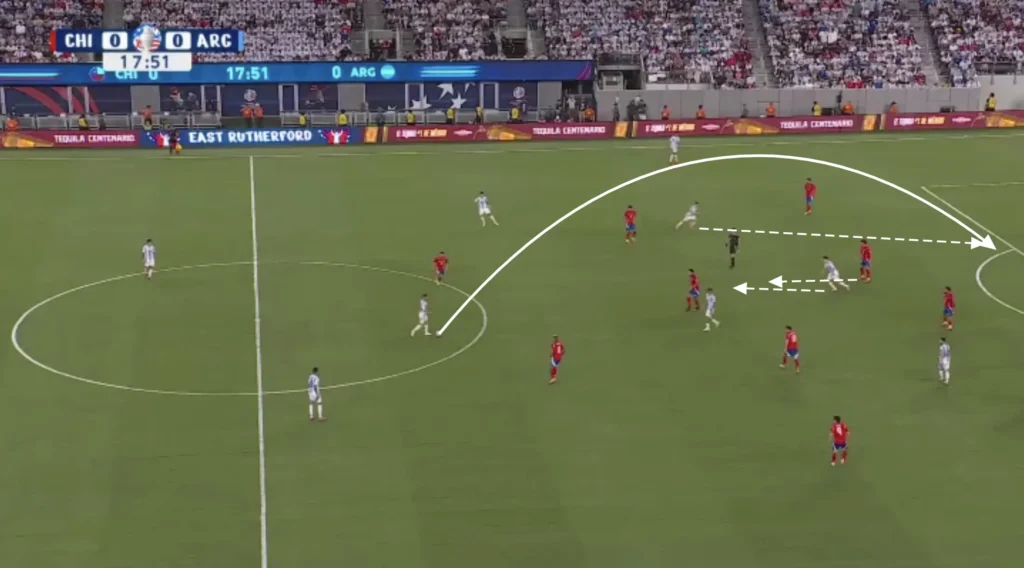
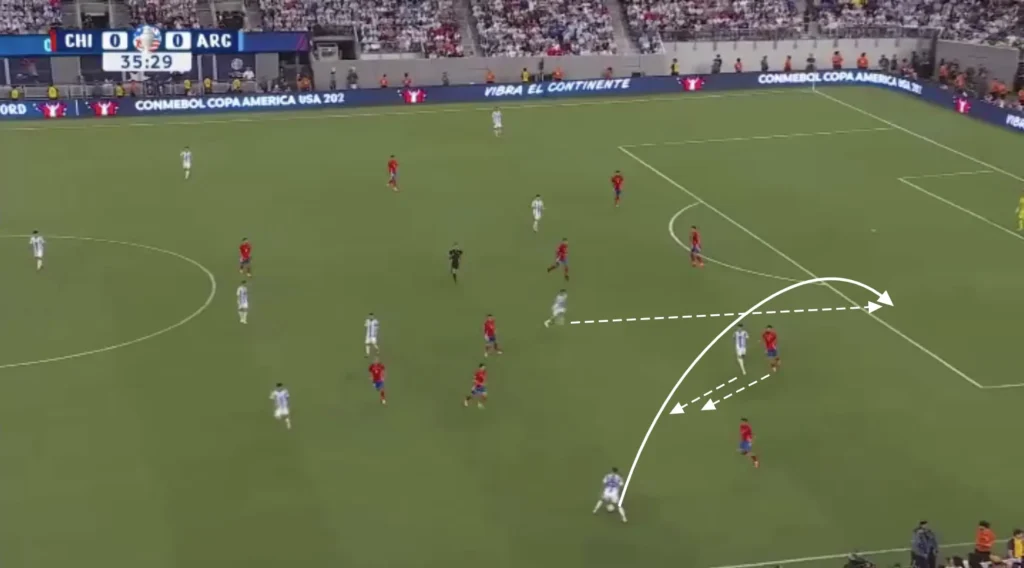
Argentina also use a counter-movement between the winger and attacking midfielder. When a wide center-back has the ball, the attacking midfielder will make the run in behind while the winger drops to open the passing lane. This creates a question for the fullback. If he steps out on the winger, the space behind him opens up, allowing the center-back to play a through-ball to the attacking midfielder. However, if he stays inside to cover the run, the ball can be played to the winger, who can turn and attack the defense.
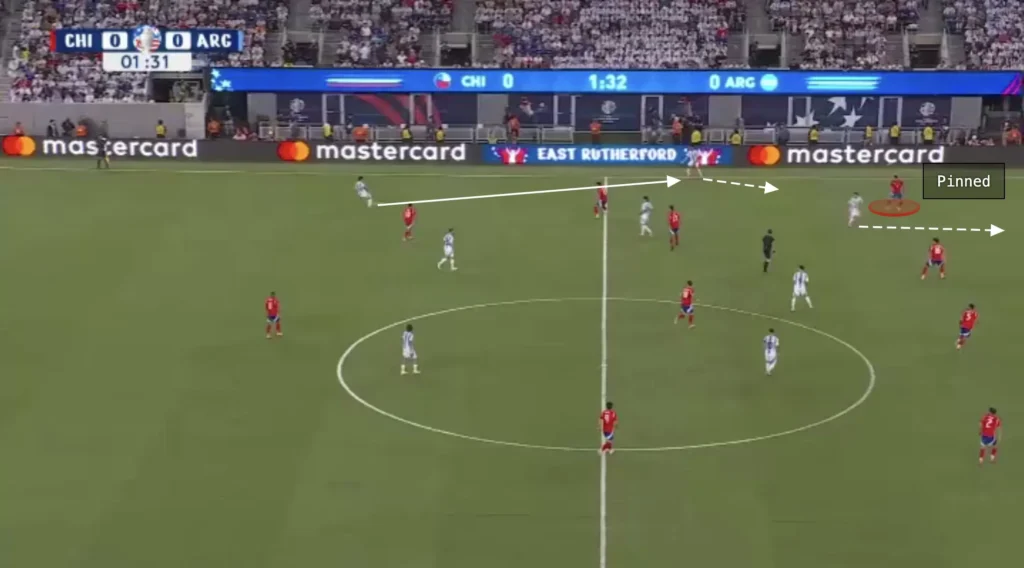
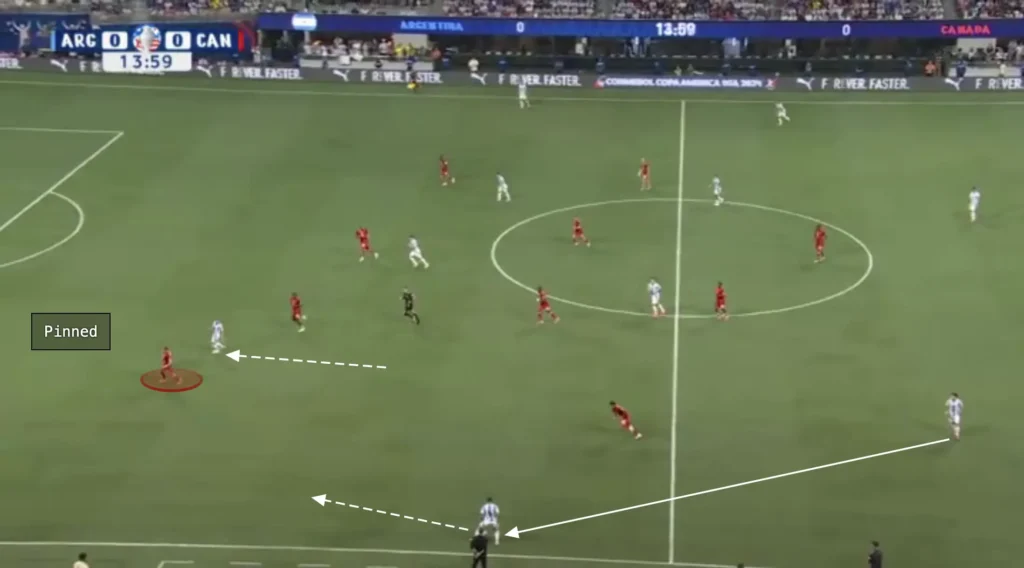
Numerical Advantages
Another massive aspect of Argentina’s high build-up is their ability to create numerical advantages against the opposition’s defensive line. Their front five naturally becomes numerically superior against a back four, which they are great at taking advantage of.
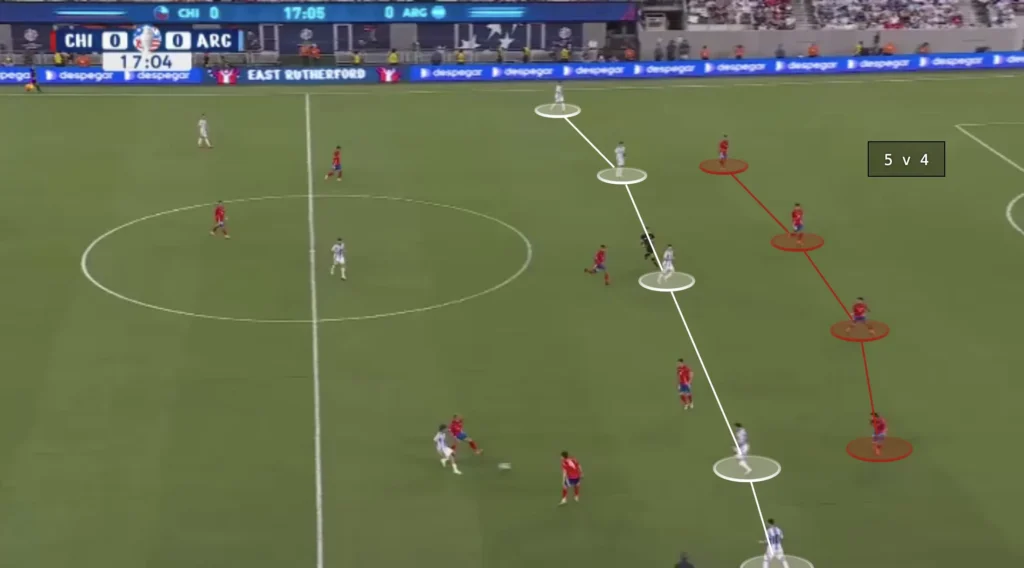
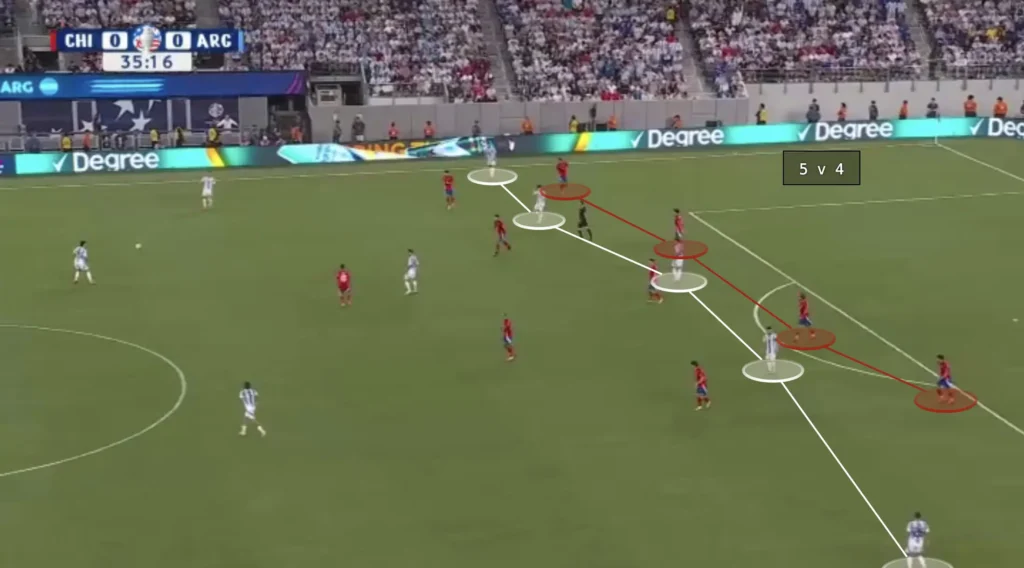
They mainly exploit this by creating 2v1 situations against the opposition fullback. When the defending team is positioned on one side, the weak-side fullback becomes vulnerable to the long switch of play due to the 1v2 against Argentina’s winger and attacking midfielder. The attacking midfielder will make a run in behind, the fullback will follow that run, and the space for the winger out wide will be opened. Scaloni’s team often capitalizes on this by getting the ball to the winger and creating many opportunities from 2v1 situations on the wing and in the half-spaces.
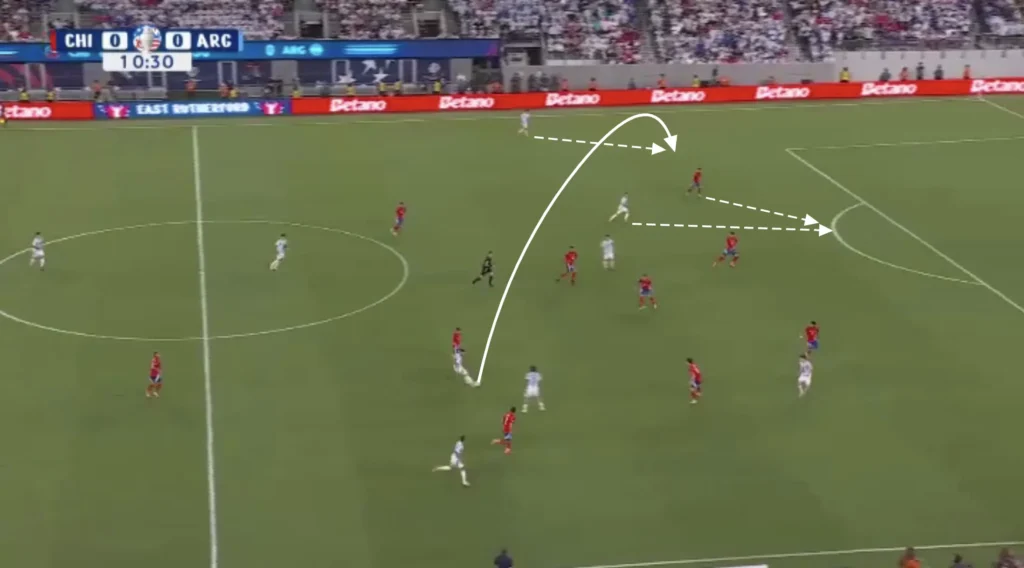
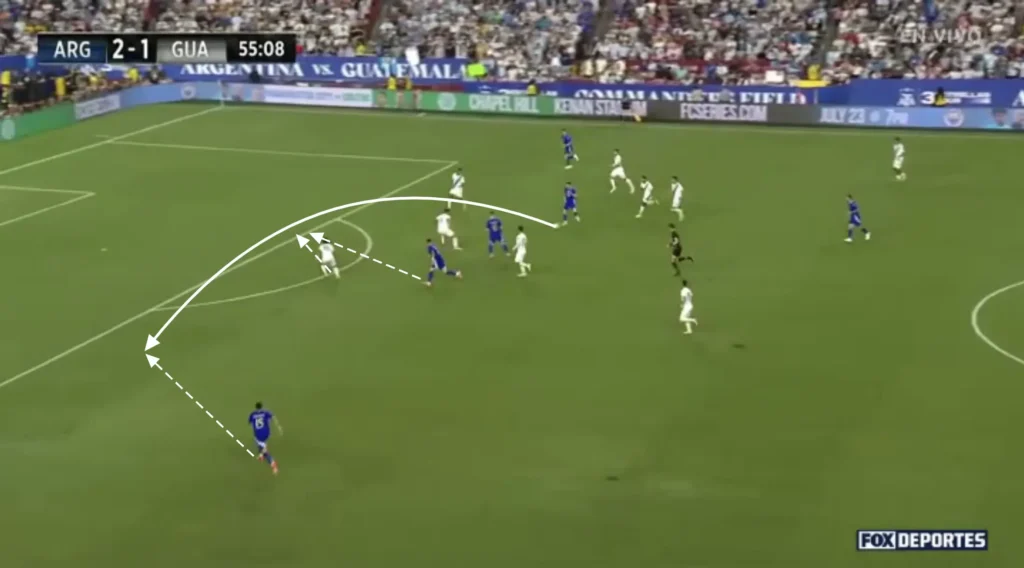
Final Third
Attacking the Half-Space
Scaloni’s players usually look to create chances by attacking the space between the opposition center-back and fullback. They primarily do this from the wide areas with underlaps from the attacking midfielders. When the winger receives the ball he will attract the opposition fullback. This opens the space between the fullback and the center-back, which allows the Argentine attacking midfielder to make the underlapping run into this space. The ball can be played to the underlapping player, who can cross the ball into the box or attack his defender in a 1v1 situation.
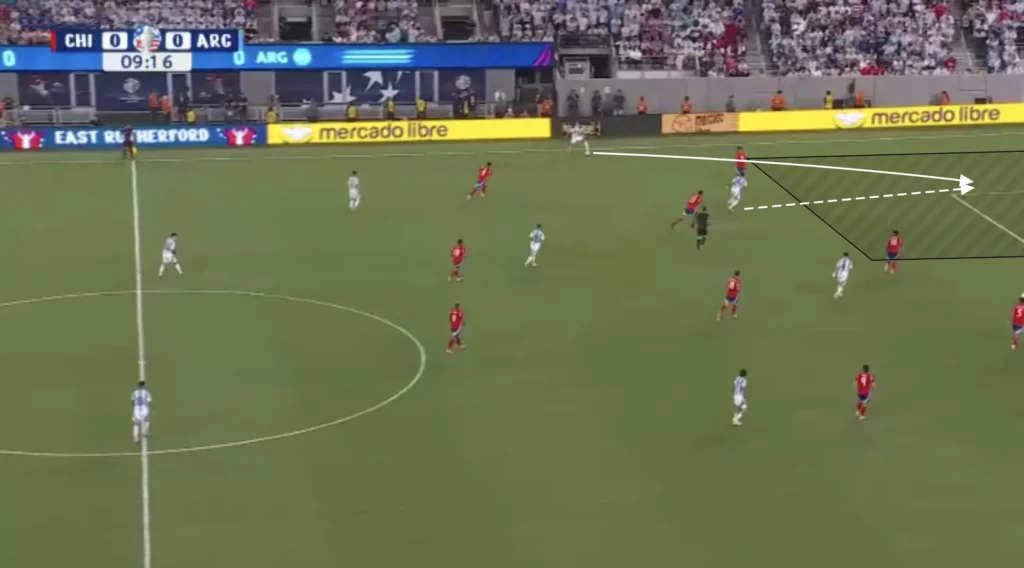
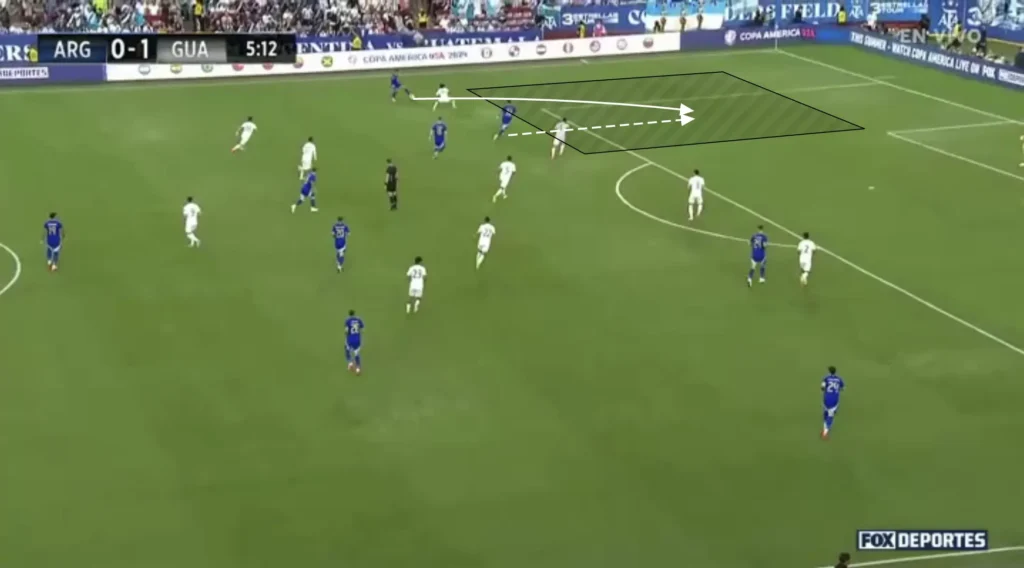
The winger does not have to play the ball to the underlapping player. The run from the attacking midfielder will often drag away an opposition defensive midfielder, which opens the space inside. The winger can take the ball inside and shoot or find a pass to a free player in front of the backline.
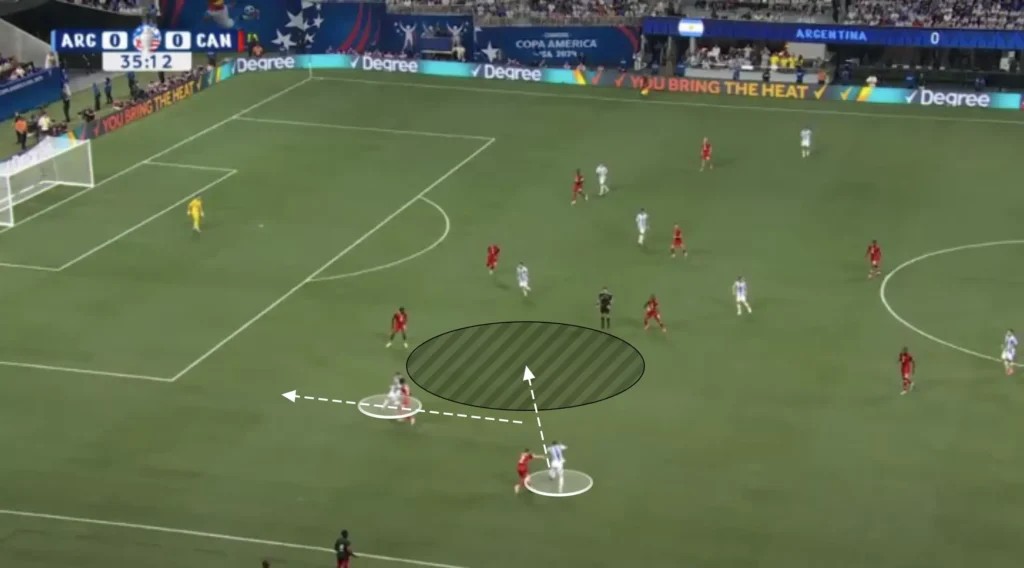
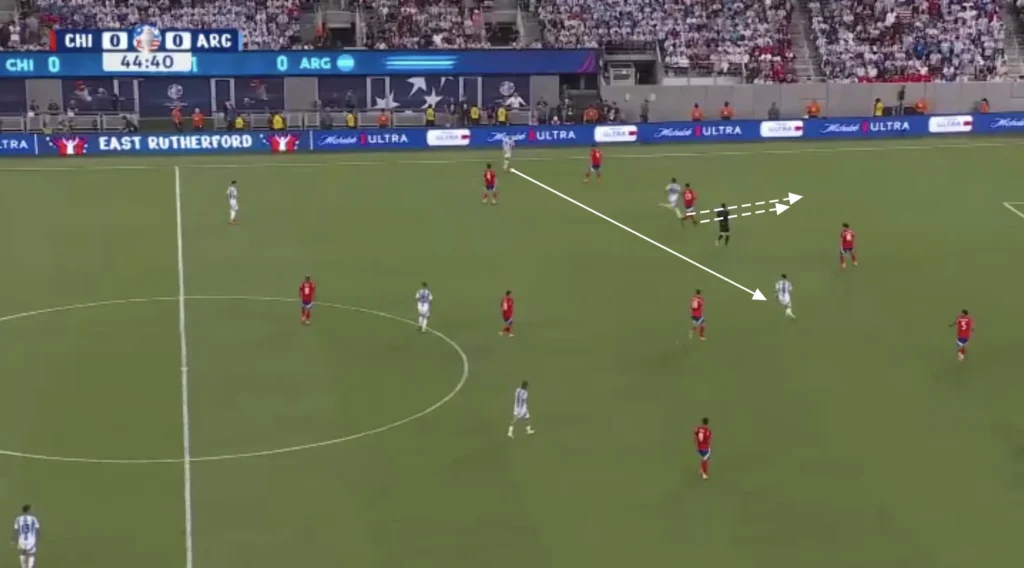
Overlaps
Argentina often use the overlap to produce opportunities in the final third. When the Argentine winger gets the ball in the half-space, another player quickly makes the overlap, creating a 2v1 on the wing. If the opposition fullback drops to cover the overlapping run, the winger could cut inside, taking a shot or combining with a midfielder. If the fullback covers the center, the ball can easily be played to the overlapping player, creating a crossing opportunity.
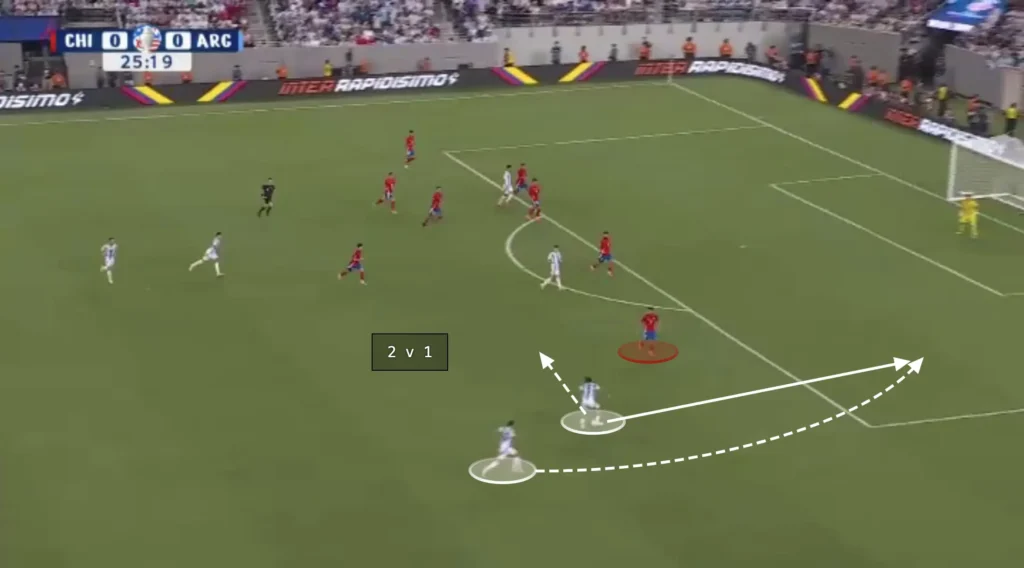
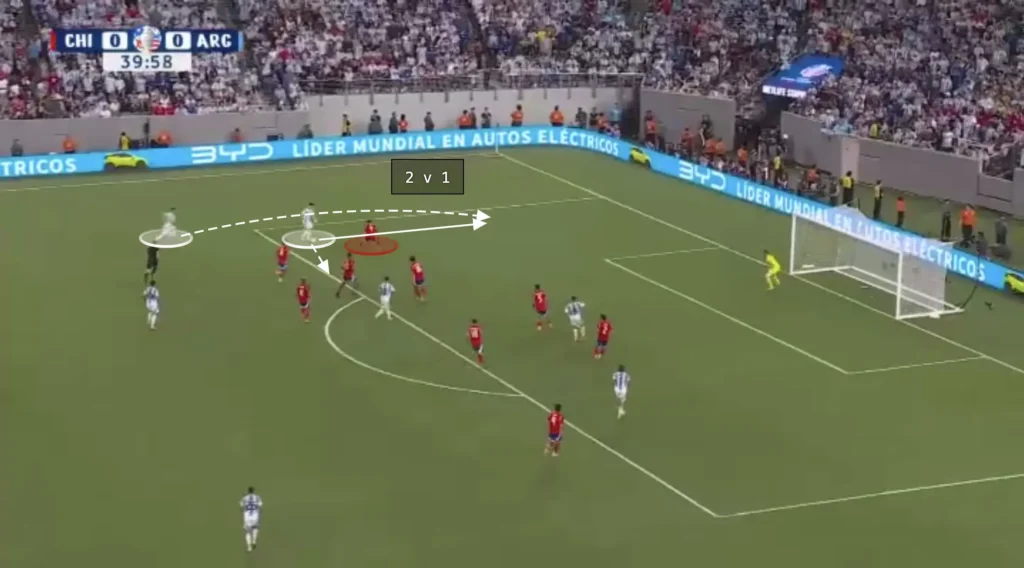
Runs in Behind
Scaloni’s players are good at converting situations where an attacking midfielder runs at the defense. The attacking midfielder will wait for a center-back to push up before he plays the ball. The center-back pushing up opens the space in behind, which allows the striker to run into the opened space. The striker will receive a pass from the midfielder, creating a 1v1 against the goalkeeper. Argentine players like Messi, Alvarez, and Di Maria have incredible timing in these situations, always releasing the ball at the right moment.

Many Players in the Box
The attacking midfielders and wingers look to make runs into the box when the ball is in the final third, often getting four or five players into these areas to create overloads. The numerical advantages in the box increase the chances of connecting with the cross, as more players present multiple targets for the crosser, making it harder for defenders to mark everyone effectively. Additionally, having multiple players in the box provides options for different types of finishes, whether it’s a header, volley, or a quick tap-in. It also allows for better positioning to react to second balls or rebounds, increasing the likelihood of capitalizing on any defensive errors.
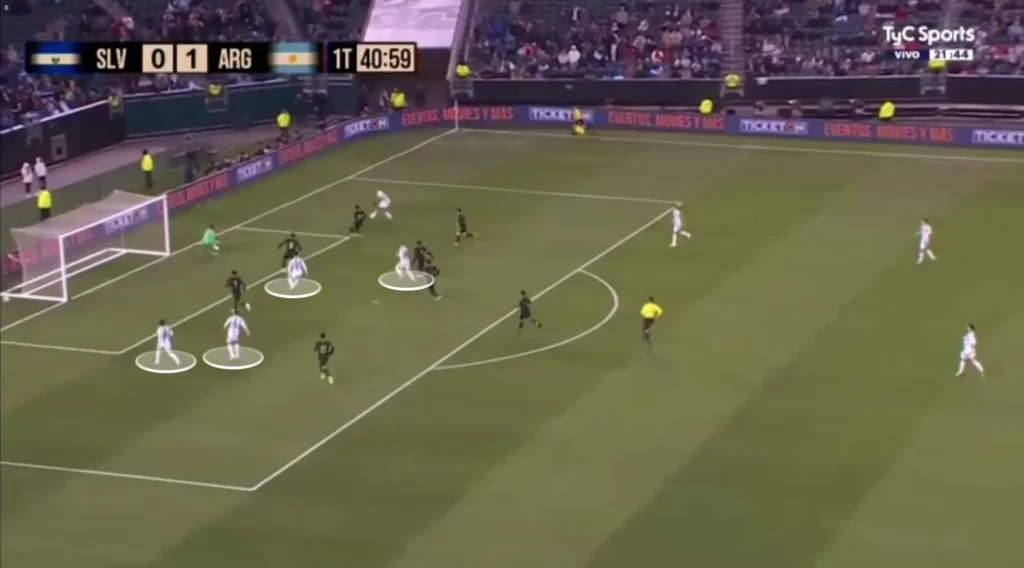
Scaloni also positions many players outside the box, ready for the second balls and cut-backs. They always succeed in pushing down the opposition’s defense, which opens the space in front of the backline. The midfielders will often be found in these spaces with cut-backs, and from there, they can shoot or combine with an attacker to create goalscoring opportunities.
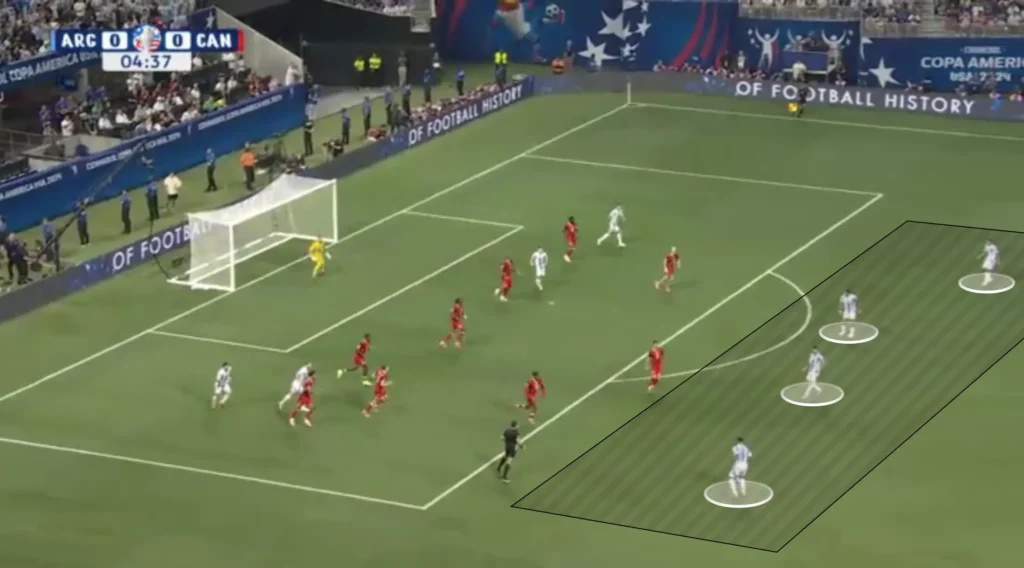
Defending
Man-to-Man
Scaloni’s Argentina defends in a man-to-man system all over the pitch. Everyone has an opposition player they are responsible for marking, which makes it difficult for the opposition to find open players. When defending man-to-man, the players must be good at defending 1v1 situations. If they are not and the opposition players win the 1v1 duels to get past their player, another player has to leave their marking, and the entire defensive structure collapses. Argentina’s defensive setup is one of their greatest attacking threats, scoring many goals from winning the ball high up the pitch.
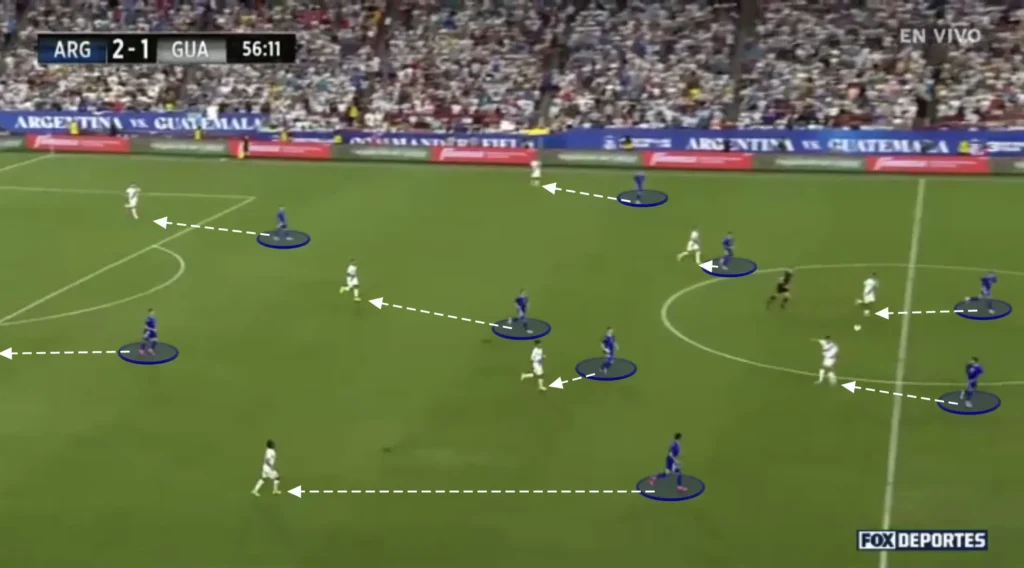
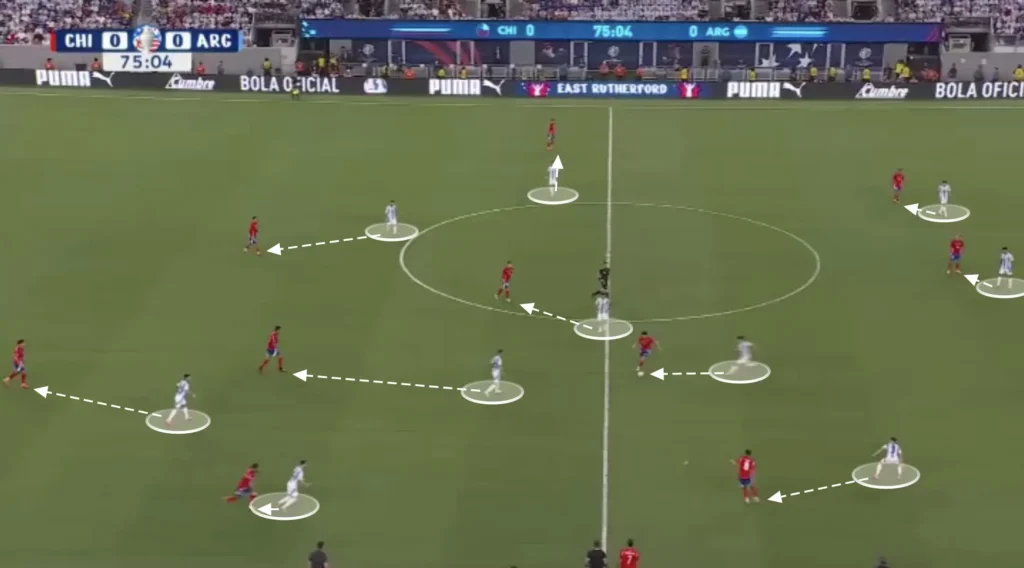
Distance Marking
In a man-to-man system, it becomes crucial that the players know when to mark the opponent they are responsible for and when not to. If an opponent, for example, is very far from the ball, the Argentine player marking him does not need to be as close to him. He can instead come in and help create numerical superiorities in the center, decreasing the risk of dangerous 1v1 situations. The Argentine players will always have an opposition player they are responsible for, however, they will never be closer to them than they need to be.
Here, the Argentina forward has dropped, not being very close to the opposition player he is marking. He is, however, between him and the Argentine goal, which means his opponent is not posing any immediate threats if he gets the ball. Additionally, he is close enough to his opponent to come across and win the ball if it gets played to him.
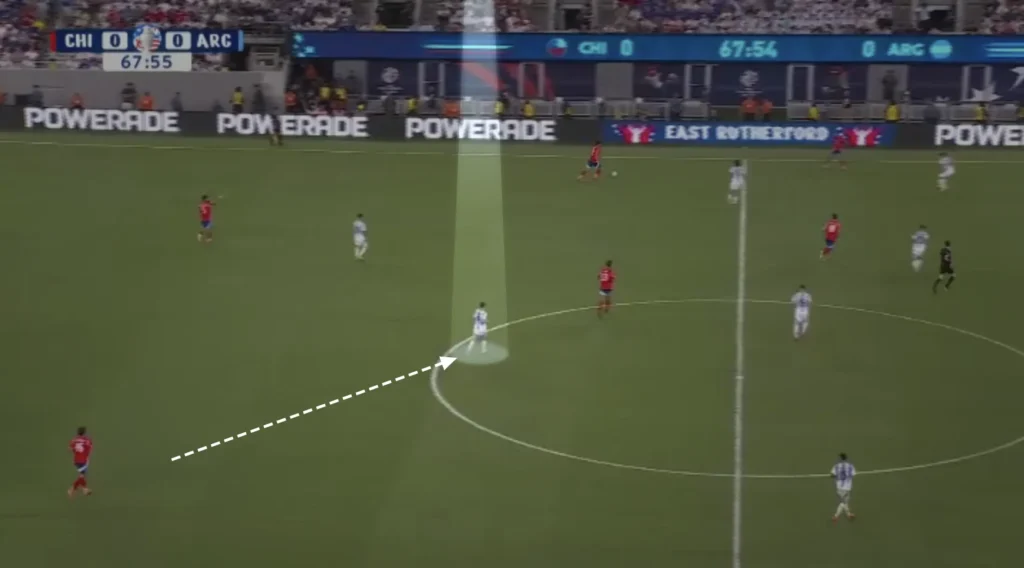
Squeezing the Pitch
Under Scaloni’s guidance, Argentina have looked to squeeze the pitch when defending. This means constantly pushing the team up as much as possible. Every time the opponent plays a slow, sideways pass or a back pass, the Argentina player man-marking the opposition player who receives the ball pushes up. When this happens, the rest of the team has to follow to stay compact. When the next pass comes, the next player pushes up, forcing the opponent back even more. They do this because it forces the opponent further from the Argentine goal, making it harder to create chances.
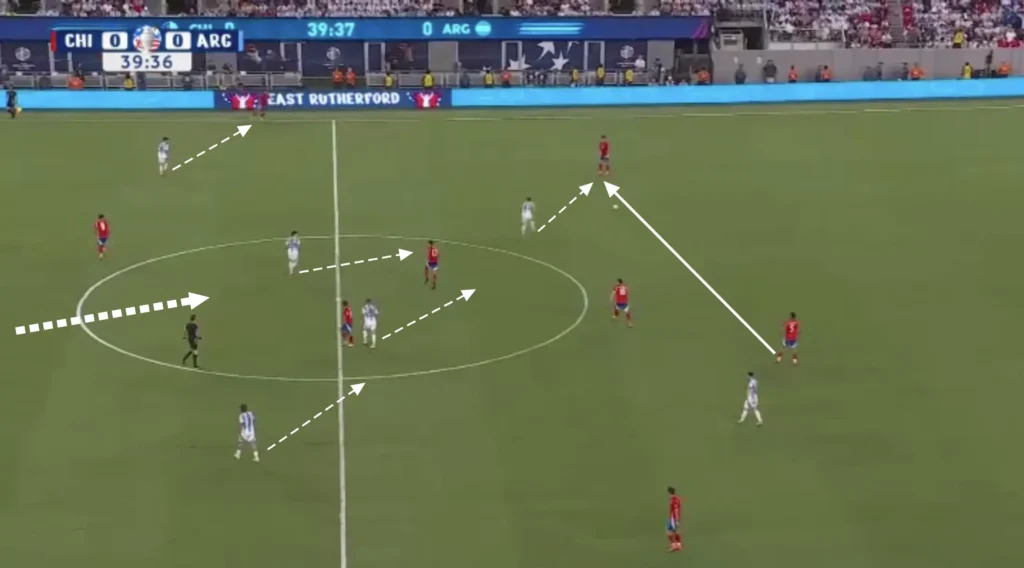
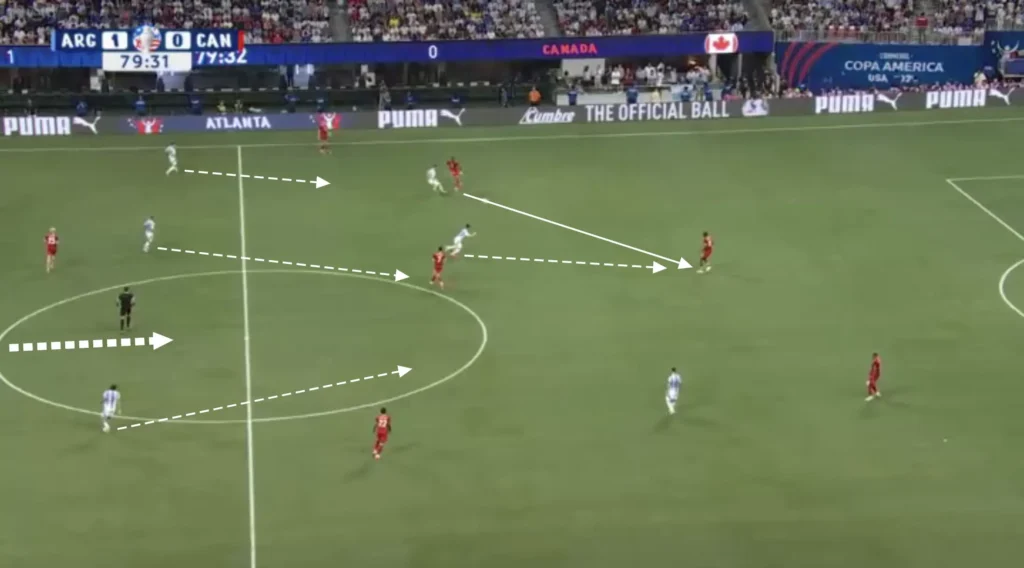
Transitions
Defensive Transitions
Positioning many players centrally, creating a numerical advantage in the midfield, creates good conditions in defensive transitions. Many players close to the ball after losing possession means that many players can work towards regaining possession. Scaloni’s players are also very aggressive in the first seconds after losing the ball. The four or five players closest will immediately jump on the opposition player with the ball and close the distance to cut off any passing lanes. Argentina, therefore, often regain possession immediately after losing it.
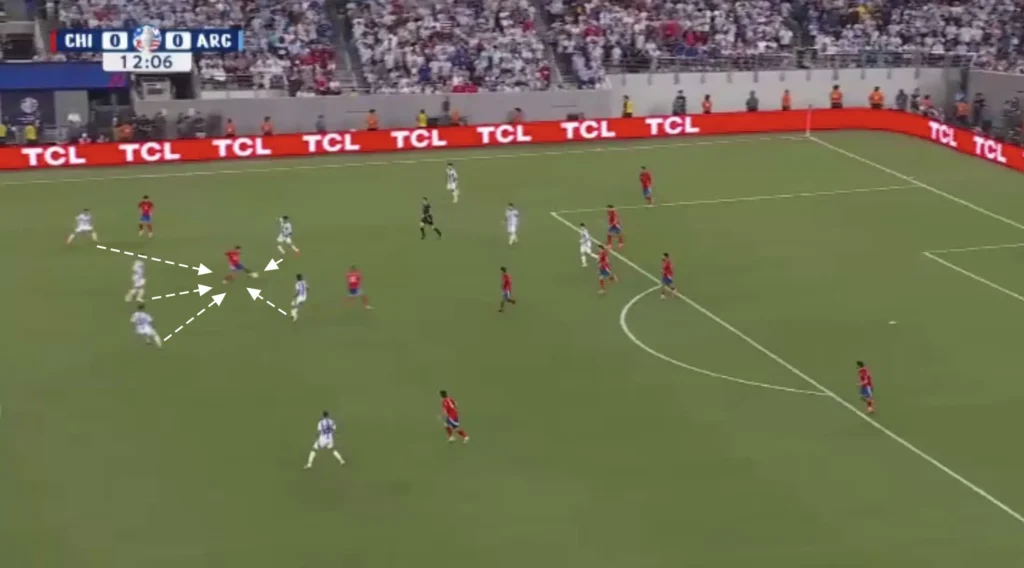
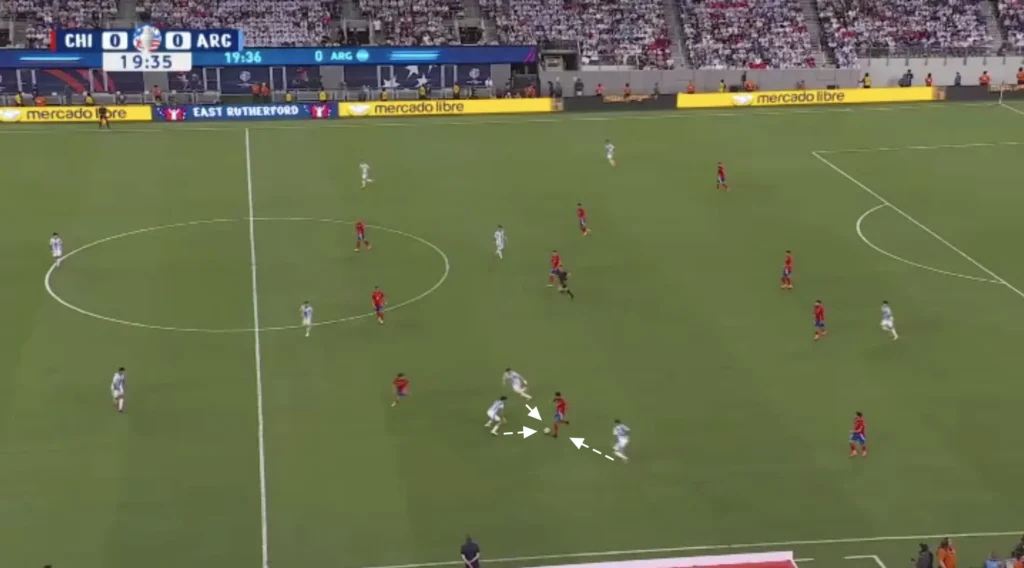
Offensive Transitions
Scaloni also wants his team to counterattack in their offensive transitions. When regaining possession, Argentina swiftly transitions from defense to attack, utilizing their quick and skillful forwards to exploit the opponent’s disorganized defense. Key players, often led by Lionel Messi, execute rapid passes and dynamic runs, creating opportunities in the blink of an eye. This approach not only puts immediate pressure on their opponents but also maximizes the effectiveness of their attacking talent. They look to counterattack with a high tempo, mainly attacking the spaces between the center-backs and fullbacks. Additionally, due to the man-to-man system, they have many players high up when defending, which enables them to incorporate more players into the counterattacks.
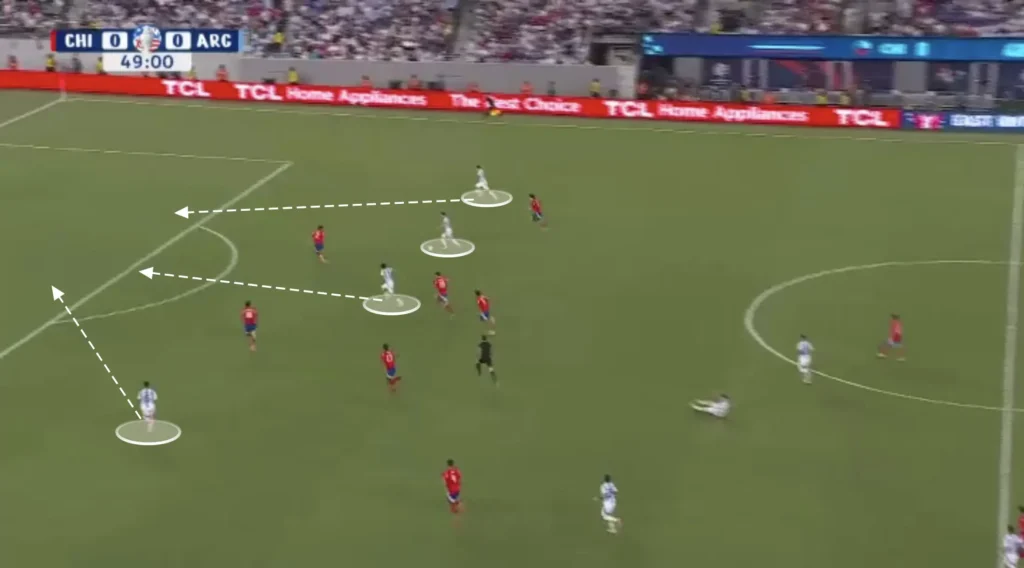
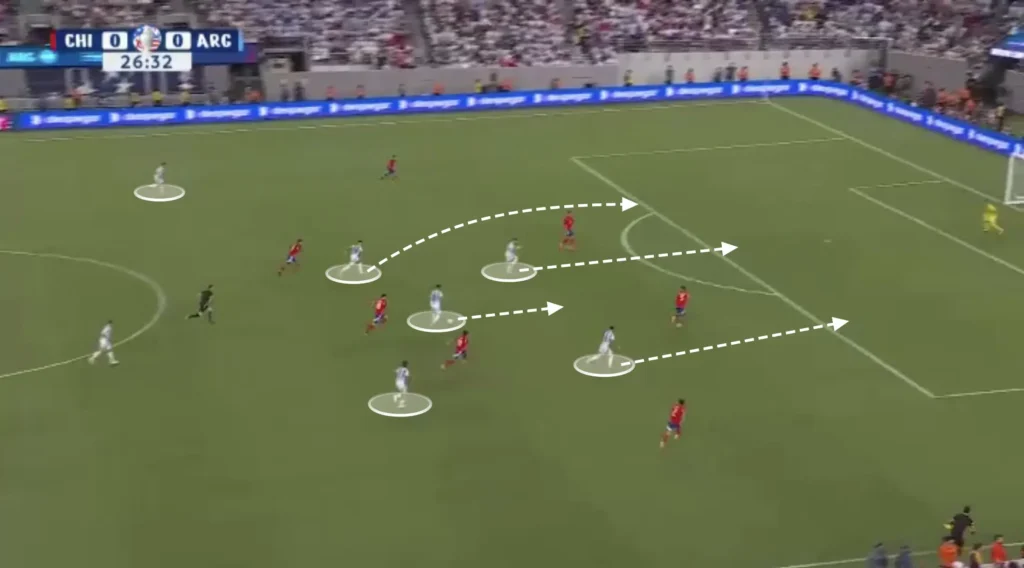
Final Thoughts
In conclusion, Lionel Scaloni’s tactical approach has transformed Argentina into a formidable and cohesive unit. His emphasis on defensive solidity, fluid formations, and maximizing the strengths of key players like Lionel Messi has brought a new level of stability and creativity to the team. Scaloni’s ability to adapt his tactics to different opponents and match situations has been crucial in Argentina’s recent successes.
As Argentina continues to evolve under Scaloni’s guidance, the team’s tactical flexibility and resilience will be key assets in future competitions. This analysis highlights the strategic depth and adaptability that have become hallmarks of Scaloni’s tenure, offering a promising outlook for Argentina’s footballing ambitions.

Muy bueno todo el análisis.
Se podría intentar un enlace para la comunidad de Football Manager de todas las tácticas analizadas ???